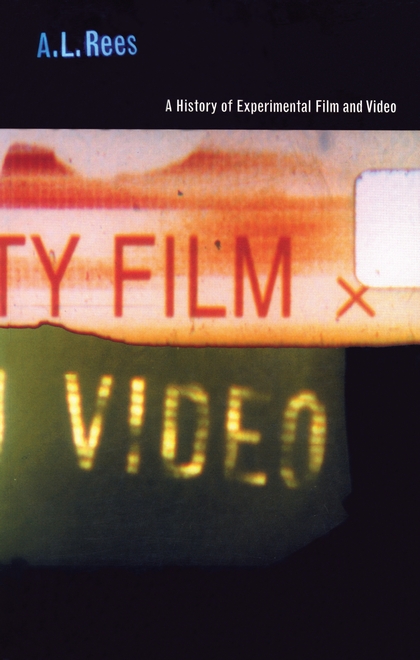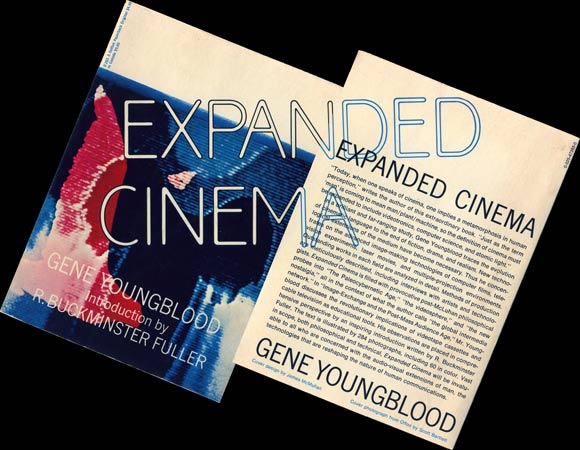A. L. Rees: A History of Experimental Film and Video: From Canonical Avant-garde to Contemporary British Practice (1999)
Filed under book | Tags: · avant-garde, cinema, experimental film, film, film criticism, film history, united kingdom, video art

“Avant-garde film is almost indefinable. It is in a constant state of change and redefinition. In this book A.L. Rees tracks the movement of the film avant-garde between, on the one hand, the cinema, and, on the other hand, modern art (with its post-modern coda). But he also reconstitutes the film avant-garde as an independent form of art practice with its own internal logic and aesthetic discourse.
This is the first major history of avant-garde film and video to be published in more than twenty years. Ranging from Cezanne and dada, via Cocteau, Brakhage and Le Grice, to the new wave of British video artists in the 90s, this remarkable study will introduce a generation of new readers to avant-garde film as well as provoking students and specialists to further reflection and debate.”
Publisher BFI Publishing, London, 1999
ISBN 0851706843, 9780851706849
viii+152+[32] pages
Interview with author: LUX (2011).
Reviews: Felicity Sparrow (Vertigo, 1999), Alexander Graf (MedienWissenschaft, 2000), Felicity J Colman (Viewfinder, c.2011).
PDF (4 MB, updated on 2021-2-8 via esco_bar)
Comments (2)From Absolute Cinema to Future Film: Materials from the History of Experiment in the Moving Picture Art (2009) [EN, PL]
Filed under book | Tags: · cinema, experimental film, film, video art

“This book initiates a new series of publications entitled Widok. WRO Media Art Reader. Its subsequent topical issues will be devoted to the presentation of materials about theory, esthetics and history of new media art.
Widok (Polish for “the view”) means a particular perspective, but it is also the name of the street in Wrocław where WRO Art Center has opened in 2008. In accordance with its name, the series presents an insight into cultural and artistic phenomena from the realm of new media, as seen through the collection and archives of the International Media Art Biennale WRO. It is thus a view shaped by the works, topics and personalities throughout 20 years of WRO activities, presenting the nexus of art, technology and social phenomena emerging from the shifting domains of artistic creation and media.”
Edited by Violetta Kutlubasis-Krajewska and Piotr Krajewski
Publisher WRO Art Center, Wroclaw, 2009
84 pages
PDF, PDF (English, updated on 2016-11-10)
PDF (Polish, added on 2016-11-10)
Gene Youngblood: Expanded Cinema (1970)
Filed under book | Tags: · art, art history, computer film, computing, cybernetics, expanded cinema, experimental film, film theory, holography, intermedia, media art, multimedia, technology, television, video, video art

“The first book to consider video as an art form, was influential in establishing the field of media arts. In the book he argues that a new, expanded cinema is required for a new consciousness. He describes various types of filmmaking utilising new technology, including film special effects, computer art, video art, multi-media environments and holography.” (Wikipedia)
Part One: The Audience and the Myth of Entertainment
Part Two: Synaesthetic Cinema: The End of Drama
Part Three: Toward Cosmic Consciousness
Part Four: Cybernetic Cinema and Computer Films
Part Five: Television as a Creative Medium
Part Six: Intermedia
Part Seven: Holographic Cinema: A New World
Key words and phrases: Jordan Belson, expanded cinema, Nam June Paik, Buckminster Fuller, Stan VanDerBeek, videotronic, Ronald Nameth, Carolee Schneemann, John McHale, Expo 67, slit-scan, John Cage, light pen, Gene Youngblood, Otto Piene, Beflix, Howard Wise, KQED, Samadhi, WGBH-TV
Introduction by R. Buckminster Fuller
Publisher E.P. Dutton, New York, 1970
SBN 0525101527
432 pages
Reviews: Paul Cowen (Leonardo, 1972), Thomas Beard (Artforum, 2020), Caroline A. Jones (Artforum, 2020).
Analysis: Adam Sindre Johnson (2010, NO).
PDF (45 MB, no OCR, via Internet Archive, added on 2016-3-2)
PDF, PDF, PDF (5 MB, OCR)
PDF chapters

